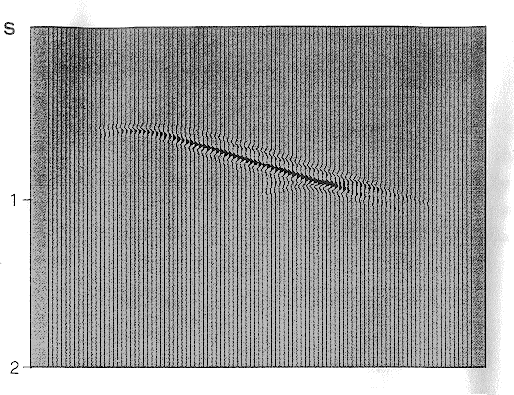




Next: Velocity function
Up: Testing for Kirchhoff migration
Previous: Testing for Kirchhoff migration
The zero-offset response of the dipping reflector, shown in Figure 7,
was migrated with a half-aperture width of 25 and 5 traces
respectively as shown in
Figure 11 and Figure 12. The choice of a small aperture
results in undermigration. As the migration aperture becomes smaller,
the edge diffractions become more pronounced. Also, the reflector is
not fully shortened to its actual length, and the dip remains smaller
than the true structural dip. As the aperture increases, the
reflector is migrated closer to its true location and the output
section is improved.
f3-23a
Figure 11
Migration of the zero-offset response of the dipping reflector
shown in Figure 7 using a limited migration aperture width
(half-aperture, 25 traces).

f3-23b
Figure 12
Output migrated section (half-aperture, 5 traces).






Next: Velocity function
Up: Testing for Kirchhoff migration
Previous: Testing for Kirchhoff migration
Stanford Exploration Project
11/11/1997


